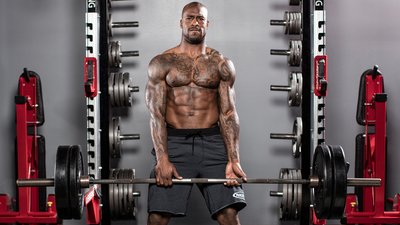Your vision of lifting increasingly heavier weight on all your major barbell movements may be 20/20, but any number of obstacles can obscure your efforts. Improving the big three barbell lifts—bench press, squat, and deadlift—takes practice and patience. It means doing the little things that add more weight to the bar. To wit:
- Practice builds skill and patterns your body to move with strength.
- Patience gives you the mental frame to maintain practice for the long haul—through strength building's peaks and valleys.
- Willingness to do the little things is what sets the mighty apart from lifters who never reach their full potential.
Training not just raw strength but also deep core strength and grip strength are the aforementioned little things that can help you reach your peak with the big three lifts. Let's go through them one by one.
1. Building Raw Strength: The Simple Principles
While knee wraps, bench shirts, squat suits, and the like may help a lifter hoist impressive numbers, they're little help unless said lifter has a solid base of raw strength. And building raw strength is a matter of principle—well, principles.
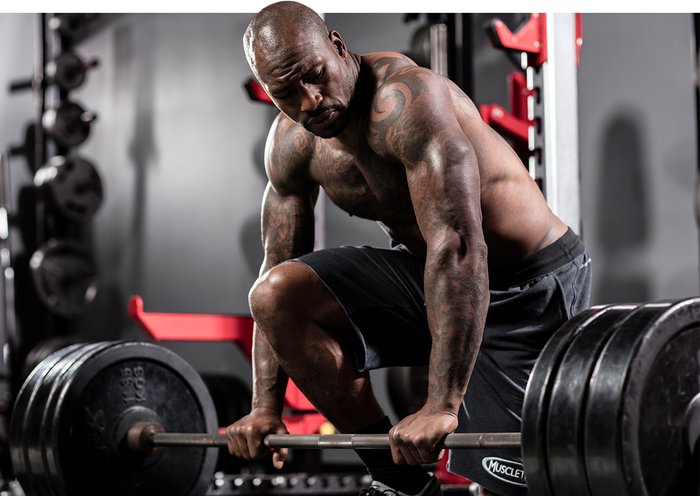
Let's cover a few key ones for building raw strength.
- Position is the alpha and the omega of strength building. Setting up, moving through, and finishing in optimal body positions are what teaches your body to be strong while also keeping it safe. It also makes your lifts efficient, allowing you to move more weight. Find someone to learn from and who can monitor your lifting positions and form.
- Skill building requires frequent rehearsal—you can't be great at something by doing it only few times per month. That doesn't mean you have to train all three big lifts heavily every time that you do them; light practice during a warm-up or as assistance training works just fine. But if you want to be strong in the big three, practice at least twice per week.
- Lifters often suffer from training ADHD and add a ton of purposeless, miscellaneous exercises to their training programs. Rather than adding a ton of variety, stick to a few staple exercises, and train them with focus and intent.
Building raw strength is a matter of simple, sustained, principle-based effort. Get in good positions, practice those positions with vehement intent, and stick to a few staple movements.
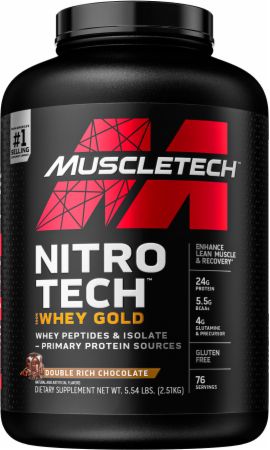
2. Building Core Strength: From Inside Out
"The core" is often misunderstood in the training world. There are more definitions, and more opinions on how to train it, than there are hot dog vendors in New York City.
Core training is so important, because it puts and keeps your body in strong and safe positions while moving. All the crunches in the world won't make you a better squatter or deadlifter, but learning how to put your hips, trunk, and spine in a good position—and maintain that position—will.
Training good breathing mechanics is the first step in strengthening the deep core muscles. Air goes into your lungs at the proper moment, so the muscles closest to the spine activate and create a stable platform for the rest of your core to function properly. In the gym, that means breathing only between reps and holding your breath during the actual movement. Because you're not exhaling during the lift, your intra-abdominal pressure remains consistent. This gives you greater core stability throughout the range of motion. In contrast, exhaling too early on a lift can cause you to lose your core stability and miss the lift.
To learn solid breathing mechanics, lie on your back and put your legs up on a bench so that your hips and knees are flexed to 90 degrees. Now, tilt your hips so that your low back is flat on the ground. Press your tongue gently into the roof of your mouth. This is your good breathing training position, which will in turn train your deep core.
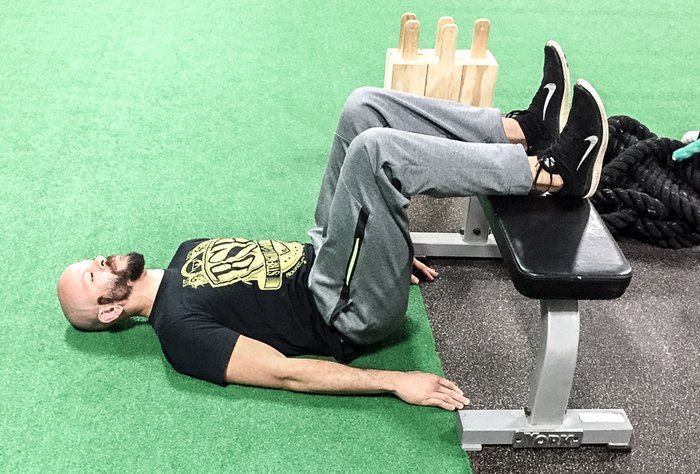
Take a deep breath in through your nose, filling your entire belly and torso with air. To exhale, take your tongue off of the roof of your mouth, purse your lips, and exhale through your mouth as if you were trying to blow up a balloon. Completely exhale. Once you think you've gotten all of your air out, breath out some more. Before your next inhalation, make sure you're reset in your good breathing position.
Once you feel comfortable, take this breathing technique to your feet. The more positions in which you breath this way, the stronger your deep core becomes.
Now that you're in control of your breathing, let's talk about training the rest of the core's qualities. The core's main job is to transfer force between the upper and lower limbs. This means the muscles around the trunk—the so-called "core" muscles—must create a ton of stiffness to support the movement throughout the range of motion. To train this, align yourself in different positions, challenge your ability to hold your trunk and spine still, and make sure you breathe as discussed above.
This is easily, and effectively, trained using holds and carries.
Planks are simple hold variations. Holding kettlebells, dumbbells, or barbells at your sides while standing are other great variations that train core stiffness. Use multiple hold variations to build core strength and stiffness. Follow these rules while holding:
- Hold a strong spine position. Your low back shouldn't be too far extended or flexed. A good indicator that you're maintaining a good position is having your hip bones pointed at the bottom of your ribs.
- You should be able to breathe easily. If you have a hard time getting air into your lungs doing a hold, you're either in a position that you can't handle or you're using too much weight. Drop the weight, or move from a standing position to one closer to the ground, like kneeling or the plank position.
Holds are done for time, and the amount is limited only by your imagination and what you want to achieve. Heavy, high-tension holds are done for shorter amounts of time: 5-15 seconds. Lighter, endurance-building holds are done for 15-60 seconds or longer. I'd recommend starting with lighter, endurance-building holds and progressing to heavier, high-tension holds. The ability to hold a good position for an extended period of time while also breathing well does magical things for your body's innate strength.
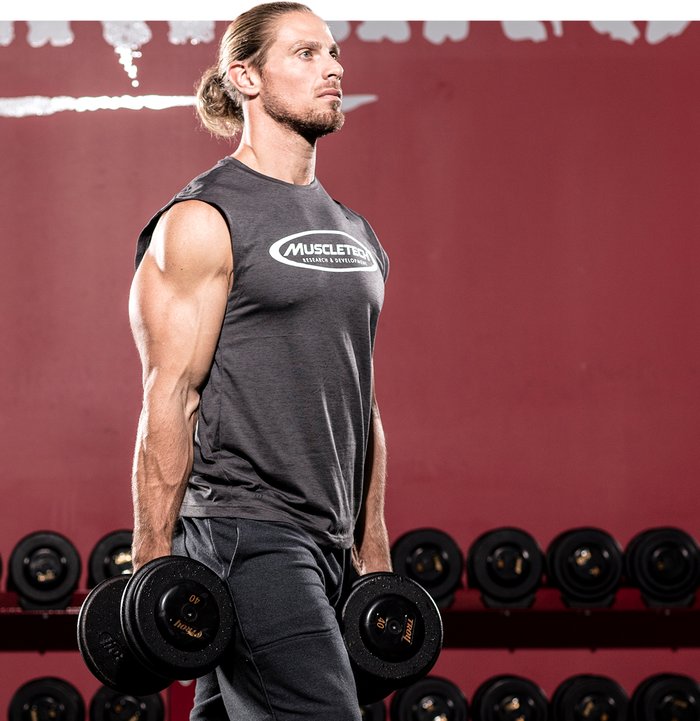
Carries are holds taken to the next level by adding movement. The goal is the same: Keep the core rigid and still. But walking adds a greater challenge, because as the weights attempt to sway, so will your body. Rather than letting the weights sway and dictate your movement, hold the weights as still as possible while also rigidly setting your core. Fight to maintain position throughout the entire set.
A set can be measured in time or distance—it's up to you. Want to build more tension through the core? Carry heavier loads over shorter distances or for time periods under 30 seconds. Want to build core endurance? Carry for long distances or time periods over 30 seconds. It's really that simple, folks.
3. Building Grip Strength
A weak grip can limit your body's ability to produce epic amounts of torque and force.
It's for a simple reason: A strong grip tells the nervous system that the body is relatively safe. Grip strength is also linked to shoulder health; a better grip helps you create more shoulder stability. In simpler terms, the stronger the grip, the more weight you can hold on to, such as during a heavy deadlift.
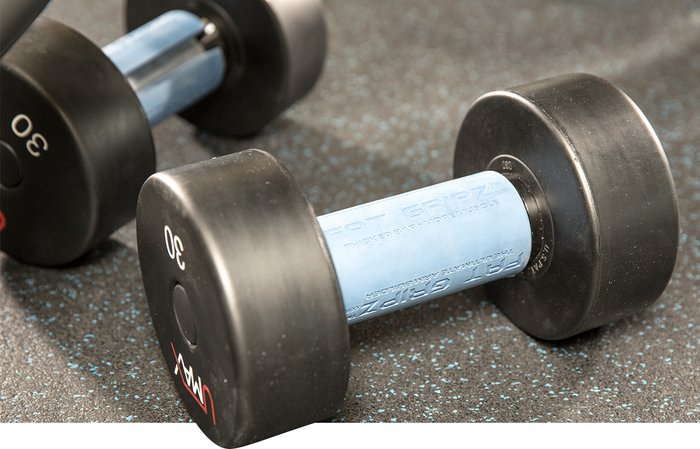
Fortunately, grip training is simple. Remember the holds and carries mentioned in the core section above? Well, those suckers build grip strength, too. And you can program them exactly as you would during core training. More tension equals shorter, heavier holds. More endurance calls for longer, lighter holds. That's why those exercises are a double whammy.
High-volume kettlebell work is also great for grip building. Simply doing high-rep sets of swings, cleans, presses, and snatches build crushing grip strength. Even simpler is a workout finisher that I used successfully during my powerlifting days, the rice bucket.
Snag a 5-gallon bucket, and fill it with uncooked rice. At the end of a few workouts each week, plunge your hands into that bad boy, and squeeze over and over, until you can't. After a few minutes' rest, do it again. This is a great way to build grip strength and endurance, and it's cheaper than buying fancy bars, gadgets, or other equipment.
Fulfilling Your Full Strength Potential
Raw strength, core strength, and grip strength are three essential types of strength that can't be neglected if you are to reach your full potential. Addressing possible weak links in the chain of complex movements requires giving thought to the little details many lifters all too easily overlook.


